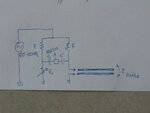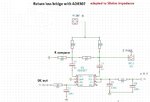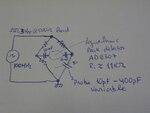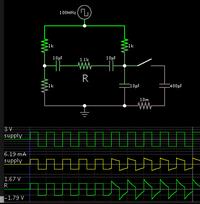vitoa
Member level 2

AC Wheatsone bridge equivalent impedance at AC 80 MHz
Hi, need some help to calculate equivalent impedance of this bridge and resistors needed at 80MHz
Capacitance Cx is going to be the variable.

Checking this theory **broken link removed**
R1/XC1 = R2/XCx at equilibrium
Cx goes from 10pF to 1nF
At 100Mhz Xc goes from 1,6ohm to 160ohms
Equivalent resistence is on this theory:
**broken link removed**
I'm going to use instrumentational amplifier to measure difference A to B. Input resistence is 1,1KOhm
So this is 1,1Kohm is equivalent to R5 in circuit.
Oscillator source can goes to minimum 500ohm impedance load. 3Vpp @ 80MHz
How to match this bridge to output of oscillator with 500ohm output impedance?
Hi, need some help to calculate equivalent impedance of this bridge and resistors needed at 80MHz
Capacitance Cx is going to be the variable.

Checking this theory **broken link removed**
R1/XC1 = R2/XCx at equilibrium
Cx goes from 10pF to 1nF
At 100Mhz Xc goes from 1,6ohm to 160ohms
Equivalent resistence is on this theory:
**broken link removed**
I'm going to use instrumentational amplifier to measure difference A to B. Input resistence is 1,1KOhm
So this is 1,1Kohm is equivalent to R5 in circuit.
Oscillator source can goes to minimum 500ohm impedance load. 3Vpp @ 80MHz
How to match this bridge to output of oscillator with 500ohm output impedance?

![IMG_4838[1].JPG IMG_4838[1].JPG](https://www.edaboard.com/data/attachments/62/62540-5e0597c10ac260fabdad183d3c621364.jpg)





